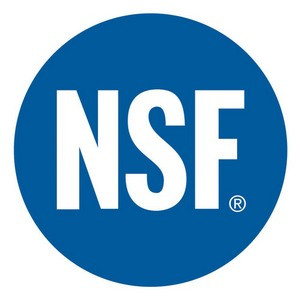What is a Foodborne Illness?
Foodborne illness is an illness or disease spread to people by food. The potential for a foodborne illness occurrence is always real, and the costs are too high. An occurrence of foodborne illness in your establishment can lead to a loss of sales, loss of reputation, negative reviews, lawsuits, and even closure of the business. Even more serious than these are the human costs. Foodborne illnesses can be debilitating. They can lead to lost work, disability, or even death.
One of the greatest challenges foodservice operators face every day is food safety. Preventing foodborne illnesses is of the highest concern. The CDC estimates that more than 40 million people get sick from foodborne illnesses in the U.S. every year. Of those who become ill, 128,000 are hospitalized and 3,000 die.
As foodservice professionals, we have a responsibility. We have a responsibility to our operation, to our customers, to our staff, and to our community. Foodborne illnesses are preventable and we all must do our part. Even here at Dine Company, we have the same responsibility. We may not prep, cook, or serve food, but we serve those that do. Our responsibility to our customers is to provide education, resources, and product knowledge. So, this article is an overview of preventing foodborne illness in your establishment.
Controlling Time and Temperature
Pathogens that cause foodborne illnesses thrive under certain conditions. Some of these conditions include low to neutral acidity, oxygen, moisture, time, and temperature. Of these factors, time and temperature are the most important to manage. The most common cause of a foodborne illness is time and temperature abuse. Time and temperature-sensitive foods have the greatest potential to cause foodborne illness. These foods include but are not limited to meat, poultry, fish, shellfish, eggs, and dairy.
Time-temperature abuse occurs when these foods remain in the temperature danger zone. The danger zone is between 41° F and 135° F. There are several ways sensitive foods become time-temperature abused. Under-cooked food is one example. Incorrect holding, cooling, and reheating procedures can also cause time-temperature abuse.
Receiving is a critical, often-overlooked step in preventing time-temperature abuse.
- Avoid taking deliveries during peak business hours.
- Verify the temperatures of all cold food deliveries.
- Reject any item that arrives in the danger zone.
- Don’t be afraid to ask the delivery driver to allow you to inspect the truck.
- Verify the truck’s refrigeration is holding at temperatures below 41° F.
At Dine Company, we have the tools you need to prevent time-temperature abuse. Use instant-read stem thermometers to check internal temperatures for cooked meats. Commercial refrigeration units store your foods safely below the temperature danger zone. Refrigerator thermometers verify your refrigeration is holding below 41° F. Keep your hot food hot with hot holding equipment. Rethermalizers reheat your food rapidly, minimizing the time spent in the danger zone. Cold paddles cool stocks, soups, and sauces rapidly.
Preventing Cross-Contamination
Pathogens that cause foodborne illnesses can transfer from one surface to the next. This is called cross-contamination. They can spread from food or from unwashed hands to other foods and surfaces. To prevent  cross-contamination, use separate equipment for different types of food. For example, use separate cutting boards for prepping vegetables, for poultry, and for raw meat. Color-coded cutting boards and kitchen tools help keep everything separated. Use green for vegetables, yellow for raw poultry, red for raw meat and so on.
cross-contamination, use separate equipment for different types of food. For example, use separate cutting boards for prepping vegetables, for poultry, and for raw meat. Color-coded cutting boards and kitchen tools help keep everything separated. Use green for vegetables, yellow for raw poultry, red for raw meat and so on.
Another step you can take to prevent cross-contamination is prepping food at different times. For example, if you need to prep raw vegetables and raw chicken at the same work station, prep the vegetables first. This will help prevent salmonella contamination. Be sure to clean and sanitize your work station before you begin and between each task.
Cleaning and Sanitizing
Cleaning and Sanitizing are critical steps in preventing cross-contamination. Simply “wiping down” your workstation is not enough to prevent the spread of pathogens. There is a difference between cleaning and sanitizing. Cleaning only removes food and other soil from surfaces. To reduce pathogens to safe levels, you must sanitize the surface as well. Any surface that will come into contact with food must be cleaned and sanitized. For more information on how and when to clean and sanitize, click here to view our blog on The Power of Clean.
Use clearly labeled pails to prepare and hold your cleaning and sanitizing solutions. Use quaternary sanitizer tablets or chlorine bleach to prepare your solution. Verify the concentration of your sanitizing solution using the appropriate test strips. Keep plenty of kitchen towels on hand for the task.
Equipment and Facilities
 Considering food safety is essential when purchasing equipment and planning your facility. Always purchase equipment from a reputable source. Look for equipment that has stainless steel and is easy to clean. Check to see if the equipment is NSF approved for safe use with food.
Considering food safety is essential when purchasing equipment and planning your facility. Always purchase equipment from a reputable source. Look for equipment that has stainless steel and is easy to clean. Check to see if the equipment is NSF approved for safe use with food.
Have a plan for your sinks. Every foodservice operation is required to have prep sinks, mop sinks, hand washing sinks, and three-compartment ware washing sinks. Use each sink only for its intended purpose. For example, no ware washing should take place in your handwashing sinks. Also, plan the placement of your sinks so as to prevent cross-contamination. Place food prep sinks away from areas where contaminated water can splash onto food. For example, placing prep sinks far away from ware washing sinks will help prevent cross-contamination.
Go With the Flow
Finally, keep in mind the flow of food through your facility. Food flows through your facility in a predictable order: receiving, storage, cooking, holding, cooling, reheating, and serving. You and your staff are responsible for preventing foodborne illness through every step of the flow. Keeping the flow in mind is critical when planning your layout. Visualize the path that food will take through your facility. Will food be anywhere near where it may become contaminated? Will it pass near restrooms or mop basins, or through dishwashing areas? Consider the flow and plan ahead to prevent exposure to these areas. Ready-to-eat food especially should never pass through these areas.
Design With Dine
Are you planning a new facility or remodeling? Contact the professionals at Dine Company. Our expert design team has over 30 years of experience in foodservice design services. They understand the specific needs and challenges of foodservice operators like food safety. Click here to see our design portfolio. For more information on food safety or the services we provide, you can visit our store at 3110 Preston Hwy in Louisville, KY. Or, you can call 1-877-346-3830 to speak to a knowledgeable associate.

